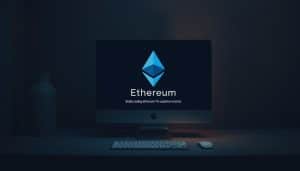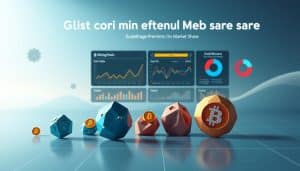Ever wondered what’s next in the crypto universe beyond Bitcoin? Well, you’re not alone. As the crypto market expands, a new breed of digital currencies, known as altcoins, is gaining momentum and catching investors’ eyes.
These altcoins, short for alternative coins, offer a world of opportunities and potential for significant returns. They’re the hidden gems of the crypto world, each with unique features and uses. But how do you identify the ones with real promise amidst the sea of options?
In this article, we’ll delve into the world of these promising altcoins, exploring their unique features, potential benefits, and how they’re making waves in the crypto market. So buckle up, it’s time to embark on a journey into the exciting world of altcoins.
Understanding Altcoins
Altcoins, short for ‘alternative coins’, refer to every cryptocurrency distinct from Bitcoin. They’ve emerged as powerful contenders in the digital currency space, eager to outstrip Bitcoin’s reach and effectiveness.
Definition and Origin
Altcoins represent diverse cryptocurrency alternatives to Bitcoin, established to compensate for Bitcoin’s limitations or provide novel capabilities. Since Bitcoin’s advent in 2009, it set a precedent for digital currencies. However, its perceived shortcomings led to new “altcoins” cropping up, like Ethereum, Litecoin, and many more. Providing a wide gamut of utilities – from faster processing speeds, as seen with Litecoin, to smart contracts enabled by Ethereum.
Key Differences from Bitcoin
Let’s delve into fundamental differences altcoins showcase against Bitcoin:
- Technological Differences: Many altcoins operate on different blockchains. For instance, Ethereum utilizes a blockchain that supports ‘smart contracts’. It’s a marked difference from the Bitcoin protocol.
- Monetary Supply: Bitcoin supply is limited to 21 million coins, while altcoins like Ethereum don’t impose a cap on their supply, leading to differing impacts on coin value.
- Usage and Functionality: Some altcoins serve specific uses. Take Ethereum’s feature, smart contracts, allowing for conditional transactions that Bitcoin’s system doesn’t support. Additionally, tokens like Radium Crypto focus on digital identities and reputation systems.
- Mining Algorithms: Bitcoin operates on the Proof of Work (PoW) algorithm. In contrast, some altcoins, such as SAMO coin, opt for alternative consensus models like Proof of Stake (PoS) to validate transactions and produce new blocks.
Adopting a diversified approach, altcoins aim to carve a niche in the cryptocurrency market, leveraging their unique capabilities. By recognizing these differences, one can understand how altcoins function outside the shadow of Bitcoin, promising innovation and growth in the world of digital currencies.
Promising Altcoins to Watch
Building on previous insights into altcoins’ potential, let’s plunge into the specifics. Here, we’ll focus on Ethereum (ETH), Cardano (ADA), and Solana (SOL). Their varied functionalities, ranging from smart contracts to digital identities, separate them from the crowd, building investor interest worldwide.
Ethereum (ETH)
Ethereum, second only to Bitcoin in market cap, enables developers to build on its blockchain, a unique capability that sparked an explosion of decentralized applications (dApps). Ethereum treads the path of innovation with its Ethereum 2.0 upgrade, moving its consensus mechanism from Proof of Work to Proof of Stake. This monumental change aims at optimizing transaction speeds and energy use, crucial in a world increasingly conscious of sustainability.
Consider this; Blockdaemon, a blockchain infrastructure platform, supports Ethereum nodes. It’s indicative of Ethereum’s popularity and the broad support it has in the blockchain ecosystem.
Cardano (ADA)
Cardano’s approach towards contracts is rooted in scientific philosophy and employs a layered architecture for security. Cardano’s ADA aims to rectify the centralized education system by recording academic credentials on a decentralized blockchain, providing indisputable proof of qualifications. It’s a visionary step, setting ADA apart from other altcoins.
Worth mentioning is Project Helius, a community-led project under development on the Cardano ecosystem, further testifying the broad scope of functionalities Cardano supports.
Solana (SOL)
Known for its incredible speed, Solana has quickly built a reputation as one of the fastest blockchains, processing up to 65,000 transactions per second. Solana’s native SOL token enables users to access the utilities within the Solana ecosystem, including Radium, a prominent DeFi protocol, and Raydium, a comprehensive trading platform.
In the Solana ecosystem, you’ll also come across SAMO coin, an experimental, meme-themed cryptocurrency. From serious DeFi protocols to playful projects like SAMO, Solana’s scalable platform accommodates all. It’s an appealing platform for developers, and by extension, a promising altcoin for investors.
These altcoins, Ethereum, Cardano, and Solana, with their innovative concepts and growing ecosystems, demand attention from anyone serious about cryptocurrency investment.
Factors Driving the Popularity of Altcoins
The escalating interest in altcoins isn’t a random phenomenon. Several levers are at play that amplify their appeal. Let’s explore two significant drivers: Technological Innovations and Market Trends.
Technological Innovations
Innovative technologies lie at the core of most altcoin propositions. They’ve redefined transaction speed, contract execution, and network scalability, surpassing Bitcoin’s performance metrics in some cases.
For instance, take the altcoin, Solana, well known for its speed and scalability. It accommodates projects varying from DeFi protocols to meme-themed cryptocurrencies. Its standout feature? A processing capacity of 50,000 transactions per second—that’s light-years ahead of Bitcoin’s seven transactions per second. It uses a unique timestamp system called Proof of History, which enhances efficiency by adding the sequence to the transaction verification process.
Similarly, Ethereum introduces disruptive technology—smart contracts. It’s not mere currency; Ethereum represents programmable money. That fundamentally shifts how we navigate financial ecosystems. An example is its DeFi applications, enabling peer-to-peer loans without an intermediary.
Market Trends
Market trends play an essential role in shaping the rise of altcoins like Ethereum, Cardano, and Solana. Factors like public sentiment, regulatory developments, and evolving market dynamics play a part here.
In crypto trading, platforms like Jupiter Dex have given these altcoins a stage to rise and shine. Its exchange lets users trade multiple altcoins, fuelling their popularity.
Additionally, the advent of Non-Fungible Tokens (NFTs) has garnered Ethereum immense attention. Think Tensor NFT, which uses Ethereum’s blockchain, drawing artists and collectors alike to the platform.
Embracing the trend, platforms like AWS Blockchain are integrating altcoins into their services. They help businesses to smoothly transition to using altcoins and leverage their unique features. This trend energizes the altcoin market, making altcoins like Radium crypto and Kin crypto attractive for users seeking more than just a currency.
Lastly, investor sentiment is a critical trend. Projects like Project Helius and X token price project a promising future for altcoins. As they gain more traction, more capital flows into these altcoins, pointing to a bright, bullish future.
Investment Strategies for Altcoins
Research and Analysis
When considering an altcoin investment, undertake rigorous research and analysis. Always dive into a coin’s background, understanding its purpose, technology, and the expertise behind the project. For instance, examining AWS Blockchain’s altcoin integration holds insights into adoption trends, while Project Helius and X token price data can illuminate potential returns.
Keep up-to-date with market trends and impactful news. Platforms such as Bybit login can provide crucial information about market shifts. Studying examples like Jupiter Dex’s altcoin popularity may also give you an understanding of market sentiment.
In your analysis, consider the practical applications of the altcoin. For example, the practicality of solar energy projects in Kamino Finance or the adoption of Tensor NFT in various industries. It’s also important to watch the development of unfamiliar projects, such as Hivemapper crypto or Ponke, to identify untapped potential.
Risk Management Considerations
Risk management is inherent to altcoin investments. Monitor your portfolio’s health by regularly checking investment platforms like MarginFi, which offer insights into investment protection.
Moreover, don’t put all your eggs in one basket. Just as you wouldn’t store all of your altcoins in a single wallet, consider diversifying your investments. Spread out your investments across promising coins such as Solana pro, Radium crypto, and Samo coin.
Consider novel altcoin projects but be aware of their risk. For instance, Crossmint introduces innovative blockchain solutions, but as a relatively new entity, it carries risk. Similarly, while Firedancer may promise high returns, evaluate its risk profile thoroughly.
Ensure you have exit strategies in place and set stop losses to protect your investment. Tools on platforms like Mac Bootcamp or Blockdaemon can help you manage your investments effectively.
Recall, investing in altcoins is an opportunity with potential for high return, but it equally carries risks. The key is to balance risk management with diligent research and ongoing market analysis.
Conclusion
You’ve navigated the exciting world of altcoins. You’ve learned about the distinctive characteristics of Ethereum, Cardano, and Solana and the potential they hold. You’ve also explored the crucial role of research and analysis in your investment journey. From understanding a coin’s background to keeping a pulse on market trends, you’re now equipped to make informed decisions.
Risk management isn’t to be overlooked. Diversifying your investments and having an exit strategy can protect you against market volatility. Remember, while altcoins like Crossmint and Firedancer offer opportunities for high returns, they come with their share of risks.
The future of altcoins is promising, with practical applications in diverse fields like solar energy and NFTs. It’s an exciting time to be an investor. So, stay informed, manage your risks, and you might just find your investment journey in the altcoin world rewarding.
What are altcoins?
Altcoins are cryptocurrencies other than Bitcoin. They often bring novel features and advancements over Bitcoin, and some prominent examples are Ethereum, Cardano, and Solana.
What makes Ethereum, Cardano, and Solana different?
Ethereum is transitioning to a less energy-intensive consensus mechanism called Proof of Stake, Cardano employs a rigorous scientific approach to blockchain development, and Solana stands out with its high speed and scalability.
How can one strategize investing in altcoins?
Investing strategies include comprehensive research on a coin’s background, staying updated on market trends, and looking into the practical applications of each altcoin.
What are some novel projects mentioned in the article?
The article mentions Crossmint and Firedancer as novel projects to consider while diversifying altcoin investments.
What’s the importance of risk management in altcoin investments?
Risk management involves diversifying investments across different coins and planning exit strategies to protect against substantial losses. It’s crucial considering the highly volatile nature of the crypto market.
Does the article suggest that altcoins guarantee high returns?
No, the article emphasizes that while altcoins offer potential for high returns, they also come with significant risks. A balanced approach combining risk management, research, and market analysis is advised.








